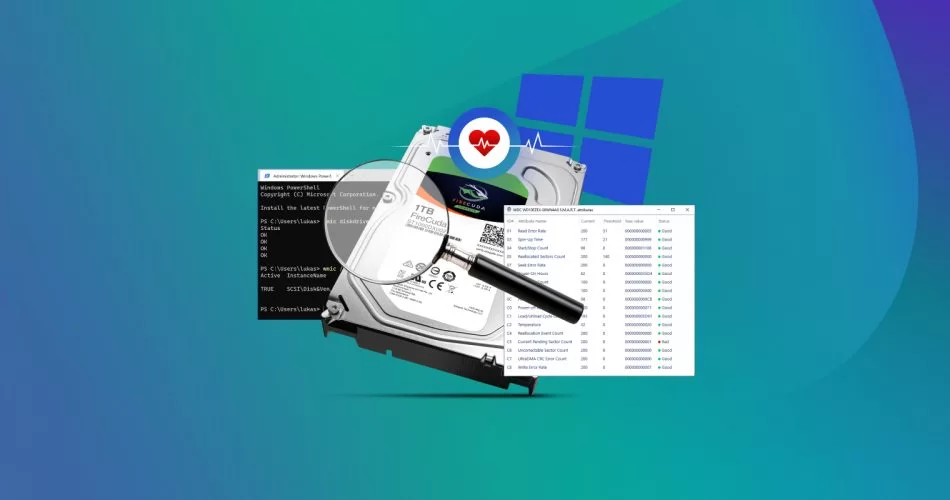How to Check Hard Drive Health with 3 simple methods
Constantly checking the hard disk prevents data loss due to logical, mechanical, and physical failures. In this article, we provide you with some smart ways to check your hard drive and make sure it is safe and sound, as well as the steps of recovering lost data from damaged hard drives using the best data recovery software in the world, Stellar Data Recovery Premium. . Stay with us until the end of this article.
Hard disk drive stores important information such as operating system files and your personal information. However, mechanical hard drives are very sensitive devices and are likely to be physically damaged or broken. Mechanical shock, damaged drives, improper use, or incorrect displacement of the drive or system can cause errors on the part of the disk that results in logical failure, mechanical damage, or physical breakage. In addition, their constant use also causes the wear and tear of these devices, leading to their breakdown and damage.
In this guide, we will introduce the most effective ways to check the health of your hard disk and show you how you can do a scheduled check on the disk and perform optimization tasks with the help of machine learning and using your system calendar application. You can keep your hard drive as efficient as possible. In addition, we will explain data recovery from corrupted hard disks step by step. Remember that bad thing can never be predicted.
Methods of checking the health of the hard drive (with software and with Windows itself)
1. Use smart tools
Hard Disk Monitoring, Analysis and Reporting (SMART) technology is a disk monitoring system installed on hard disks, solid-state drives, and eMMC storage devices. SMART data reveals important information about hard drive health, including warning signs of malfunctions or impending errors.
To access and view SMART disk data, use the command line (in the Windows search box – bottom left – type CMD and press Enter). Now, type the WMIC command, and then the disk drive gets status (pictured below). This will not show you any information, and you will only see the “OK” message on the screen if the drive is in good condition.
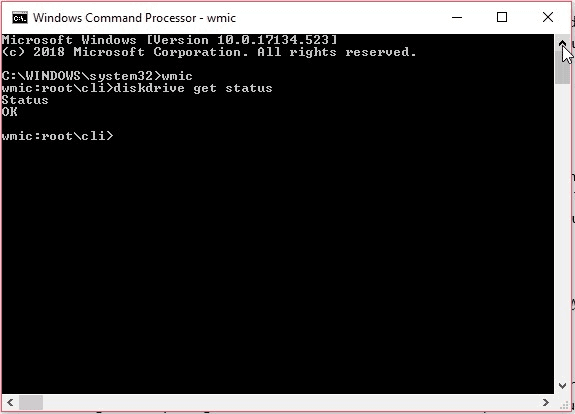
You can also use GUI-based tools such as Drive Moniteen added to Stellar Data Recovery Premium or CrystalDiskInfo software (click to download). Both tools perform very well in reporting SMART disk information. However, Drive Monitor uses a much better user interface and monitors the drive while working. In addition, monitoring the drive’s performance drive allows you to scan and find bad disk sectors and repair them if the drive is found to be unhealthy.
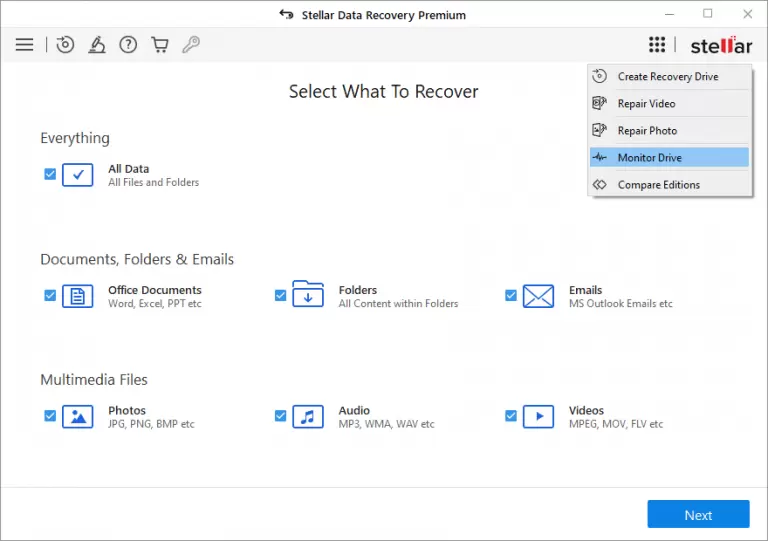
Figure 4: Click on DRIVE MONITOR to check the health of the hard drive
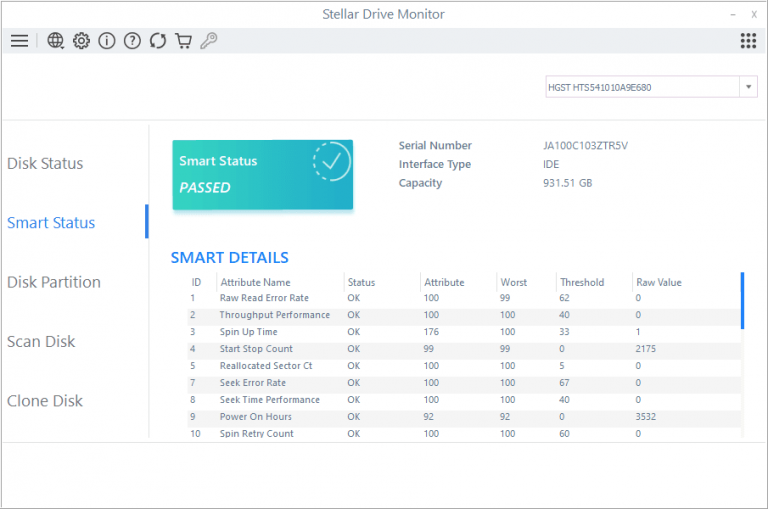
Figure 5: DRIVE MONITOR option in Stellar Data Recovery Premium
2- Physical inspection of hard disk
If data on an external or internal drive is occasionally damaged, the drive may have a physical problem. For example, the actuator arm is rubbed against the plotter until a knocking sound is heard, indicating physical problems with the drive.
Here’s how you can physically inspect your internal or external drive:
While the drive is connected to the system, make sure you hear any squeaking, rumbling, or other sounds. Also, check the drive to see if it stops spinning from time to time.
If you notice any abnormalities, clone your drive immediately. To do this, use drive cloning software such as Drive Mon, or as described earlier, you must have a hard drive with the same storage space or more than the damaged d to clone the drive.
3. Test the speed of reading or writing
You can do a few tests on your drive and test its performance like CrystalDiskMark. This software is a standard disk testing tool that evaluates the read writesrite speeds of disks such as hard drives, SSDs, SD cards or USB dr,ives, and the like.
Suppose your device speed is lower than the drive’s minimum read/write capability, which is usually mentioned on the product website. In that case, you should optimize your drive to maintain your health.
Low read and write speeds are a sign of an important problem on the drive that needs to be fixed quickly. Use the following tips to optimize your hardware to ensure the health of your hard drive.
If your hard drive has a problem: Perform disk optimization tasks
1. Disk integration
Fragmentation of data on a disk slows down read and write speeds. This happens during normal use of the hard drive and writing data to disk or reading and deleting them. The presence of fragmented and fragmented data areas puts a lot of pressure on the hard drive, and the drive has to spin more and more to get to each piece of data.
Fragmentation of the data will also cause the drive temperature to rise too high, which will lead to its failure. To integrate or differentiate these fragmented data sections on the hard disk, do the following:
Right-click on the desired drive and select Properties.
F, first click on the Tools tab and then on the Optimize button in the Optimize and defragment the drive section.
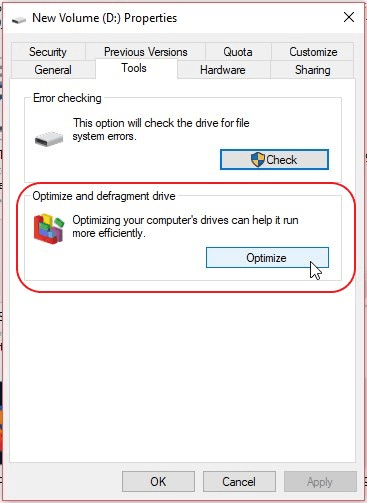
A new window will open. Select the desired drive and click the Optimize button. As an admin, you must allow optimization (diffraction) work to be done.
Tip: You can select and optimize all driher by holding down the control key. In any case, the optimization operation is performed on the drives in order.
2- Prevent the temperature from rising
Defrag,ment, or integration is a good way to prevent the drive from overheating. However, many reasons such as poor ventilation or insufficient airflow can also cause the drive temperature to rise too high. If you use a tool to monitor the drive, it automatically alerts you. You can also use the Open Hardware Monitor app for Windomakingakes it easier for you to monitor system temperature, including processors, hard drives, and ambient temperature.
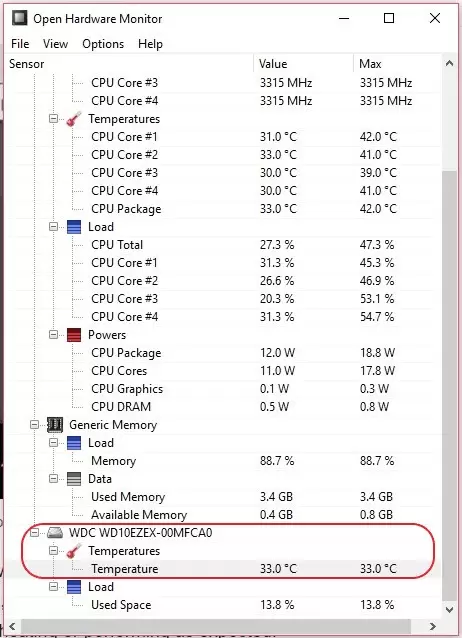
In addition, you can:
- Make necessary cha,nges such as moving the hard drive to a cooler place, moving it away from hot air, or moving it closer to the fan.
- Use a laptop cooler to keep the temperature down.
- If the problem persists, replace it with a new one.
3- Performing CHKDSK scans
The CHKDSK command is the last possible solution to check the hard disk’s health risk. You can use this command to find bad sectors and fix drive errors most often detected when removing the drive without a safety requirement. In addition, sudden or forced shutdowns, power surges, or improper handling can cause drive errors and damage the drive sectoleadinglead to more bad sectors.
To perform a CHKDSK scan, open the Camman Prompt window (type cmd in the search box at the bottom left of Windows and press Enter) and type the following command: chkdsk / r / f X. Enter. Write the name of the drive you want instead of X in this command.

4- Update the firmware
Software is software that is installed on the hardware. By hardware, we mean the same as the hard disk. The middle is what helps the drives interact with the operating system with the help of drives. Another point is that updating the hard drive firmware helps improve drive performance, fix security vulnerabilities, and fix incompatibility issues.
The easiest way is to download the Driver booster software and run a scan to update all the drivers.
Be careful: updating the firmware has a huge impact on drive performance, once; But it can also damage your drive. So back up your data before each update. Also, read the instructions carefully before manipulating the hard drive firmware.
5. Update disk drives
Drives can be easily and safely installed or upgraded. When it comes to hard drive optimization, they play an important role. You need to upgrade your hard drive drivers to the latest stable version, just like the firmware.
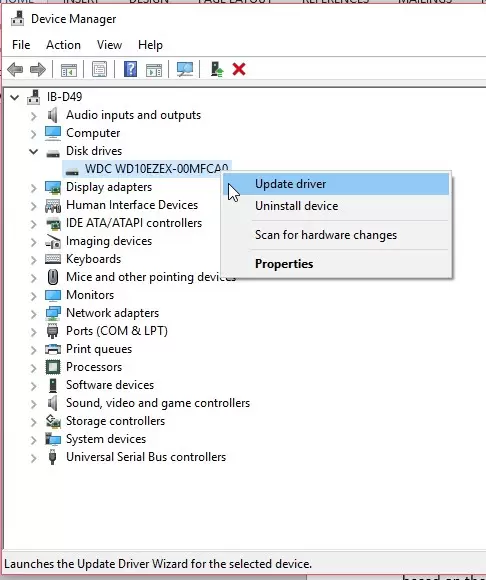
Driver updates enable interaction between hardware (hard disk) and software (operating system). Driver updates provide better support for the system and eliminate bugs that may be causing prob,lems such as not recognizing the drive or system hang (BSOD error).
Conclusion
Hard disk failure is a very common occurrence and, as explained in this article, can occur for severalr of reasons. Constant inspections of the hard drive help prevent situations such as data loss dueuch logical, mechanical, and physical defects. You can use software tools such as Drive Monit, a plugin with Stellar Data Recovery Premium software that performs physical inspections to monitor the drive better.
So at the bottom of the page, there is a Video related to How to Check Hard Drive Health with CMD.










